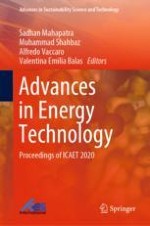2021 | OriginalPaper | Buchkapitel
6. Concept of Virtualization Linked to Energy Storage and Green Computing: A Case Study
verfasst von : Zdzislaw Polkowski, Sambit Kumar Mishra
Erschienen in: Advances in Energy Technology
Verlag: Springer Singapore
Aktivieren Sie unsere intelligente Suche, um passende Fachinhalte oder Patente zu finden.
Wählen Sie Textabschnitte aus um mit Künstlicher Intelligenz passenden Patente zu finden. powered by
Markieren Sie Textabschnitte, um KI-gestützt weitere passende Inhalte zu finden. powered by
